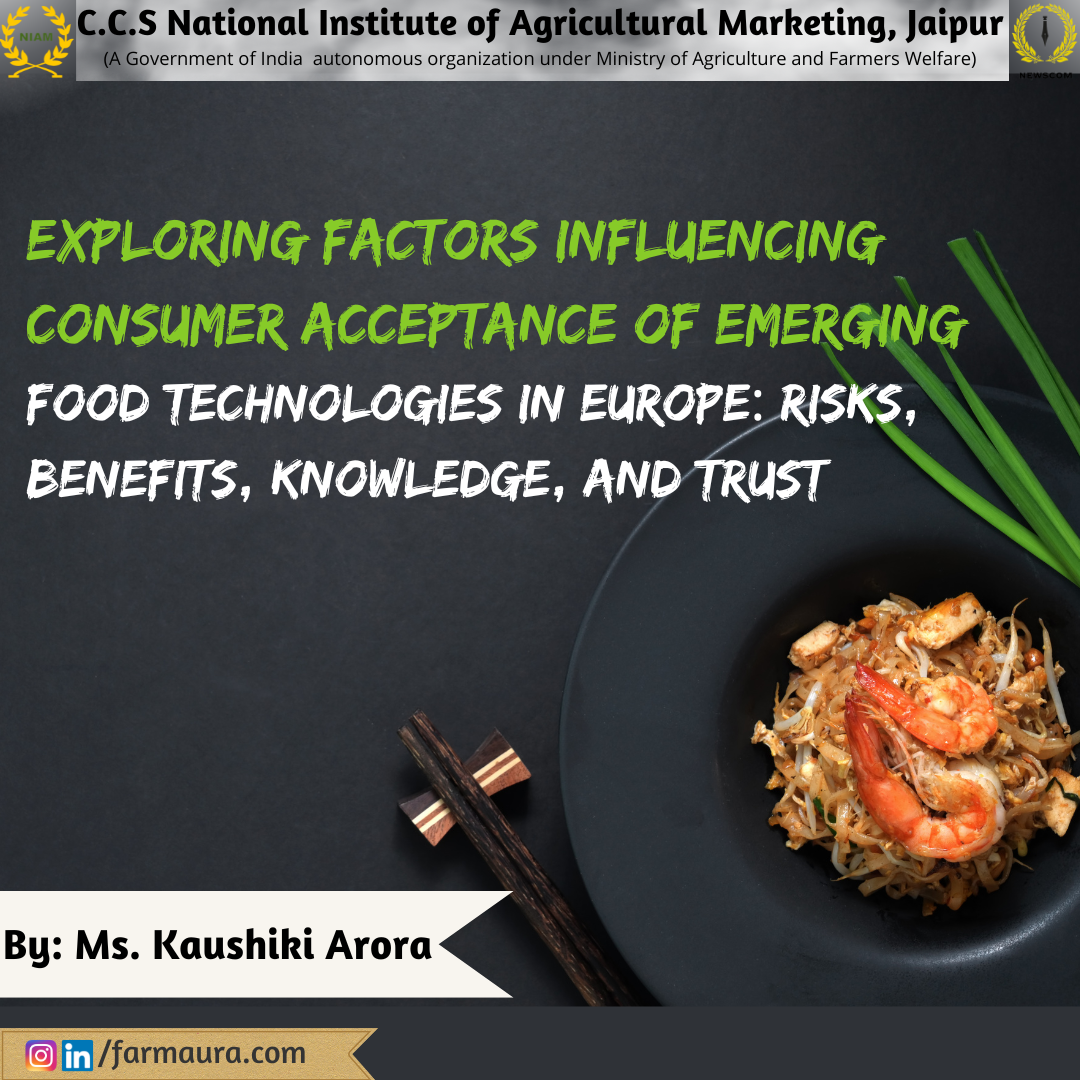Introduction:
Consumers today have access to an array of emerging food technologies, such as genetically modified maize in Spain and irradiated poultry meat in the Netherlands. While new food ingredients and food contact materials generated from these technologies are available in various European nations, the applications are still in their infancy and are expected to expand.
One of the factors contributing to this interest is the range of benefits new food technologies can offer to consumers and the food industry. These purported benefits include utilizing less energy, water, and chemicals while producing less waste, and consuming safer, healthier, and more nutrient-dense meals. However, little is known about the toxicological makeup of hazards, the likelihood of exposure, and the risk to consumers from some new food technologies.
Emerging Food Technologies:
In Europe, Regulation (EC) No 258/97 sets the precedent for the use of novel foods or novel food ingredients and their marketing inside the community. Novel foods or food ingredients are defined as those that have a history of safe food use, contain or are produced from genetically modified organisms (GMOs), have a new or purposefully modified primary molecular structure, are made of or isolated from microorganisms, fungi or algae, plants or animals, and are not obtained through traditional propagating or breeding practices.
Consumers’ Attitude:
Consumers’ awareness of food safety issues increased in 1988 as a result of the initial poor handling of the BSE crisis, which led to false reassurances that beef was safe when it wasn’t, and the subsequent poor handling of the Belgian dioxin incident in the same year. Reports show that instances of past food safety disasters like this have decreased the public’s trust in food safety procedures.
Influencing Factors:
1. Risk-benefit perceptions
Consumer acceptability of new food technologies is determined more by risk perception than by the technical risk estimates offered by specialists, and food technologies often exhibit many of the risk characteristics that cause consumers the most worry. The impression of the possible advantages is another factor in how well a technology is received. The majority of people begin to doubt the necessity of and use of modern food technology due to a lack of seen benefits, which can further exaggerate perceived risks and moral issues.
2. Socio-demographic and economic factors
Women are more prone than men to be anxious, to be less optimistic, and to see fewer advantages in modern food technologies. Students and young people often have favorable opinions about biotechnologies. Concerns about morality and ethics may also have an impact on how well-received new technologies are. They mostly speak of “tampering with nature,” permanently altering nature, and “playing god” in reference to biotechnologies.
3. Knowledge:
The data on the consequences of new knowledge is conflicting, with some research concluding that it has no discernible impact and others showing either positive or negative benefits. Others have noted that transferring information to the general public does not ensure that they will have more favorable attitudes toward technology and science. It has been demonstrated, though, that consumers’ ignorance of novel and emerging food technology can act as a significant impediment to their acceptance.
4. Trust in the source of information
Health experts, academic scientists, and consumer advocacy groups are the most reliable information sources in Europe, followed by journalists and industrial scientists.
5. Labelling:
To increase awareness and transparency, labeling seeks to provide extra information about the technology and its advantages. The use of labels can improve the feeling of personal control over the consumption of novel food products. Recent studies show that consumers and stakeholders appreciate the presence of more and clearer labeling on food products generated from new food technology. If the danger is something they can control, people are more willing to try new foods, which may explain why they favor increased regulation and clear labeling.
Conclusion:
In recent years, emerging food technologies have gained popularity in Europe, with consumers and the food industry seeking the purported benefits of safer, healthier, and more nutrient-dense meals. However, the toxicological makeup of hazards, the likelihood of exposure, and the risk to consumers from some of these new food technologies are not well understood. Factors influencing consumers’ acceptance of new food technologies include risk-benefit perceptions, socio-demographic and economic factors, knowledge, trust in the source of information, and labeling. While labeling seeks to increase transparency and personal control over the consumption of novel food products, the public’s trust in food safety procedures has decreased in recent years due to past food safety disasters. Overall, understanding the factors that influence consumers’ attitudes toward emerging food technologies is crucial for the successful adoption and integration of these technologies into the food industry.




